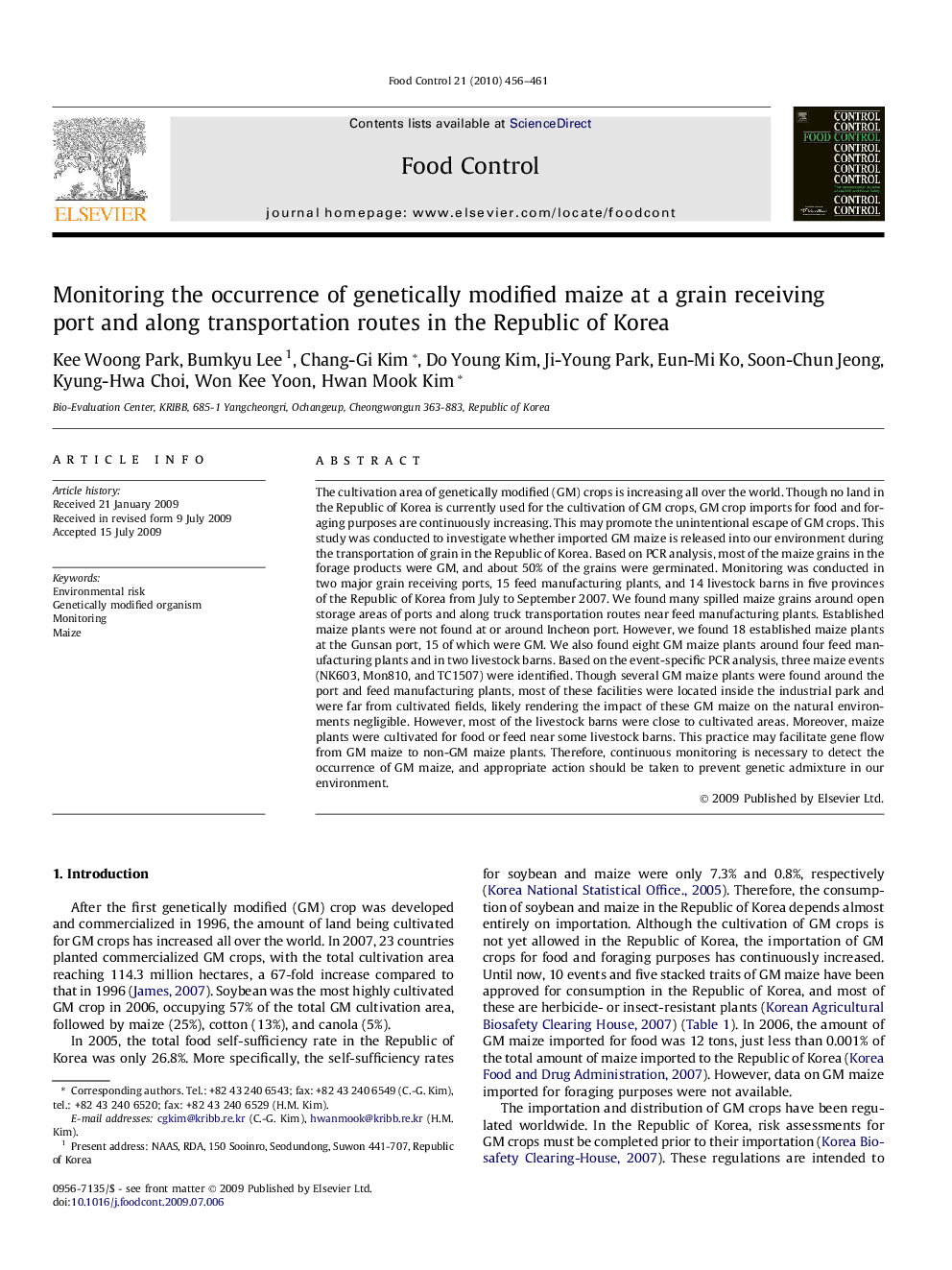| کد مقاله | کد نشریه | سال انتشار | مقاله انگلیسی | نسخه تمام متن |
|---|---|---|---|---|
| 4559904 | 1330480 | 2010 | 6 صفحه PDF | دانلود رایگان |

The cultivation area of genetically modified (GM) crops is increasing all over the world. Though no land in the Republic of Korea is currently used for the cultivation of GM crops, GM crop imports for food and foraging purposes are continuously increasing. This may promote the unintentional escape of GM crops. This study was conducted to investigate whether imported GM maize is released into our environment during the transportation of grain in the Republic of Korea. Based on PCR analysis, most of the maize grains in the forage products were GM, and about 50% of the grains were germinated. Monitoring was conducted in two major grain receiving ports, 15 feed manufacturing plants, and 14 livestock barns in five provinces of the Republic of Korea from July to September 2007. We found many spilled maize grains around open storage areas of ports and along truck transportation routes near feed manufacturing plants. Established maize plants were not found at or around Incheon port. However, we found 18 established maize plants at the Gunsan port, 15 of which were GM. We also found eight GM maize plants around four feed manufacturing plants and in two livestock barns. Based on the event-specific PCR analysis, three maize events (NK603, Mon810, and TC1507) were identified. Though several GM maize plants were found around the port and feed manufacturing plants, most of these facilities were located inside the industrial park and were far from cultivated fields, likely rendering the impact of these GM maize on the natural environments negligible. However, most of the livestock barns were close to cultivated areas. Moreover, maize plants were cultivated for food or feed near some livestock barns. This practice may facilitate gene flow from GM maize to non-GM maize plants. Therefore, continuous monitoring is necessary to detect the occurrence of GM maize, and appropriate action should be taken to prevent genetic admixture in our environment.
Journal: Food Control - Volume 21, Issue 4, April 2010, Pages 456–461